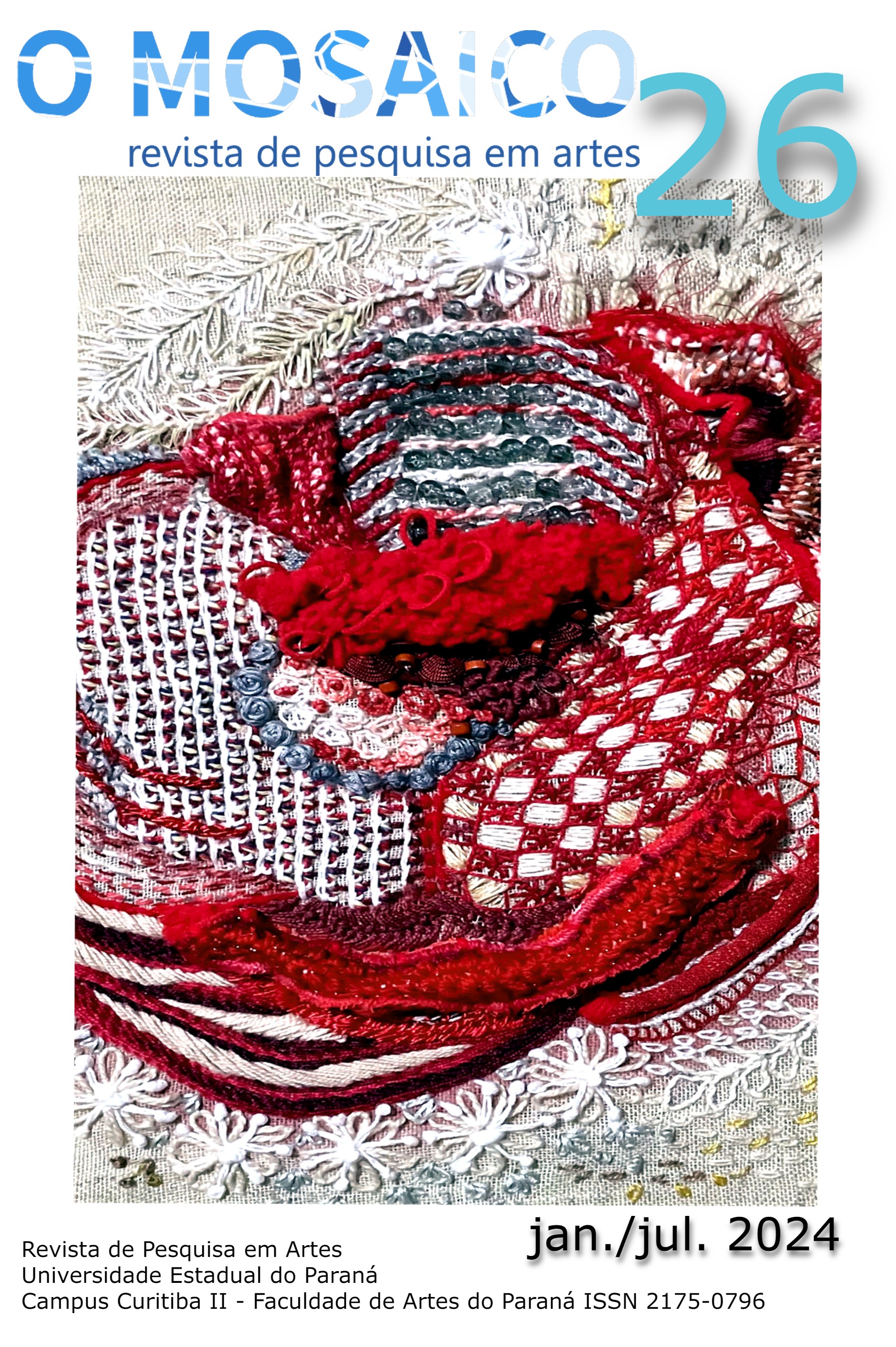DIVERSITY IN A DECOLONIZING WRITING OF MUSICAL SHEET FOR THE SCENE BASED ON THE BRAZILIAN CONCEPT MACRO-HARMONY
DOI:
https://doi.org/10.33871/21750769.2024.18.1.9314Keywords:
Macro-harmonia ; Sonoplastia ; Partitura ; Diversidade ; DecolonialidadeAbstract
Bringing together all the diversity of the narratives from the elements that constitute a performance, within the same degree of relevance, in a graphic plan that is unifying enough to record, analyze, and re-enact them is indeed a great challenge. In this pioneering journey, some fundamental lessons have been learned. The discovery of the possibility for transducing functional harmony system was providential, because it brought to the staging approach a whole system of efficient, objective and concrete recording and analysis, to which it was possible to add elements not contemplated in the traditional musical score, the non-acoustic elements. The idea of the elasticity of the performance and the adoption of time as a horizontal axis were essential for the score to be able to simultaneously express the evolution of the narratives from elements of different nature, such as the narrative of music, light, costume, body expression, spoken and interpreted text, among others. The text introduces new concepts such as marco cênico, cenário sonoro, foco sonoro, pleonasmo sonoro, and macro-harmonia. Finally, the score proposed here should be seen as a tool that has been tested in dozens of theatrical productions over decades, undergoing constant analysis and improvement, always motivated by issues from the stage work. It is presented as a proposal, a possibility, the beginning of a debate, not the end of the matter.
Downloads
Downloads
Published
How to Cite
Issue
Section
License
Copyright (c) 2024 O Mosaico

This work is licensed under a Creative Commons Attribution-NonCommercial-ShareAlike 4.0 International License.
The authors retain the copyright, when licensing their production in the journal O Mosaico, which is licensed under a Creative Commons license. When submitting the work, and upon acceptance, the author assigns his/her copyright for publication in the journal. Readers can download, print and use the articles published in the journal, as long as there is always an explicit mention to the author (s) and to the O Mosaico, and no changes to the original work are allowed. When submitting an article to the journal O Mosaico and after accepting it for publication, the authors allow, without remuneration, to pass the following rights to the journal: the first edition rights and the authorization for the editorial team to transfer, according to their judgment, this article and its meta data to indexing and reference services.

